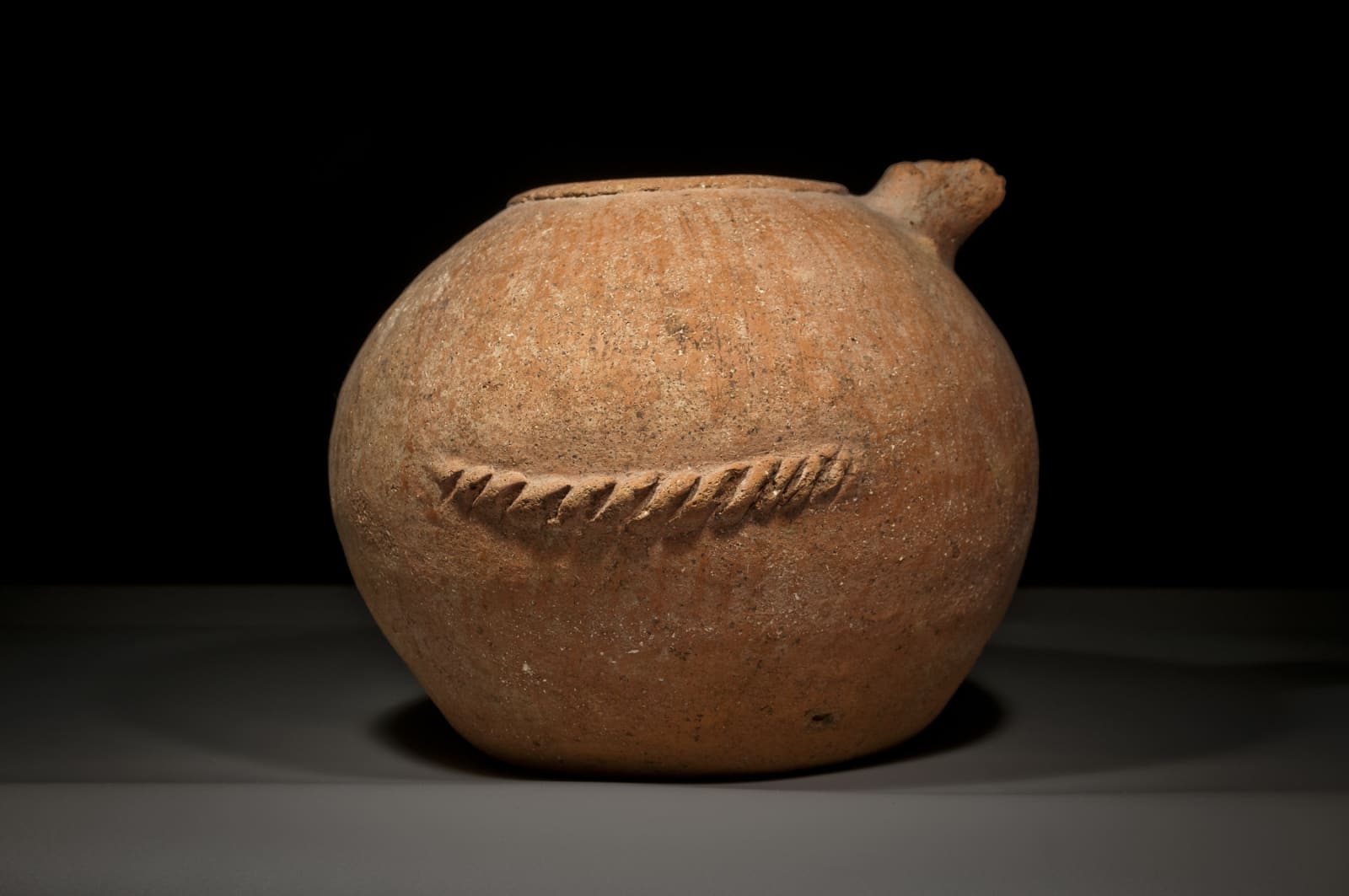Red Burnished Large Spouted Canaanite Jar, Early Bronze I 3100 B.C. - 2900 B.C.
Further images
Provenance
Found in south of Hebron, the Judean Hills,The Private Collection of the Baidun Family
Mahmoud Baidun (1920-1980) founded what would become Khader M Badiun and Sons Galleries in Jerusalem, Isreal. As a young boy, Mahmoud would accompany archeologists, biblical scholars, and visiting delegations on excavation sites all over Jerusalem and other sites within the country. Earning the trust of scholars and archeologists alike, Mahmoud became an indispensable presence and guide to other visiting scholars. When Mr. Baidun entered the antiquities trade, he would be granted trade license under the British Mandate and from the Hashemite Kingdom. When Israel authorized the trade of antiquities, Mahmoud was issued one of the first antiquities licenses issued in the country. He would later forge close relationships with other merchants; slowly building a massive private collection that would go on to sell to political leaders, international museums, and private collectors globally.
Publications
(Cf. Hendrix, R., Ancient Pottery of Transjordan, no. 96, pp. 114-115This elegant globular vessel was made in the ancient region of Canaan, about four and a half thousand years ago. It is deceptively simple – the main body is essentially globular, as stated, tapering slightly from the shoulders to a discrete raised, non-carinated rim. The sides bear a pair of so-called ‘pie-crust’ ledge handles with hatched relief, and a short, tubular spout. The ground is plain red and burnished to a smooth surface, reflecting the original, practical function. While it is impossible to be certain about how it was used, it seems probable that it was a storage and dispensing vessel for liquids – probably milk, water or wine – in a domestic setting.
The Canaanites are renowned for pieces such as this: their artistic heritage is characterized by well-proportioned, harmonious and subtle compositions, and an evident enjoyment of aesthetic forms, even in everyday objects. The Canaanites were one of the ‘tribal’ groups of what was to become Israel, Palestine and Jordan, who had their cultural roots in the Neolithic revolution when agriculture became the standard economy in the Near East. By the Bronze Age the stability of the area and their position between great trading powers – notably Egypt and Mesopotamia – made them prosperous and culturally diverse and was a high point for artistic creation. The culture contracted with economic issues suffered by Egypt and the Mesopotamians and went through a collapse at the end of the Bronze Age due to a combination of ‘Sea People’ invasions, environmental meltdown and internal troubles in Egypt leading to loss of infrastructure throughout the Near East. Their resurgence of power in the Iron Age was matched by that of the Ammonites and Moabites, among others, and the region eventually came under control of the Neo-Assyrians by the mid 8th century B.C.E. This piece is typical in its functionalism, geometric simplicity and harmonious use of color – it is a mature and impressive piece of ancient art.
Cf. Hendrix, R., Ancient Pottery of Transjordan, no. 96, pp. 114-115





